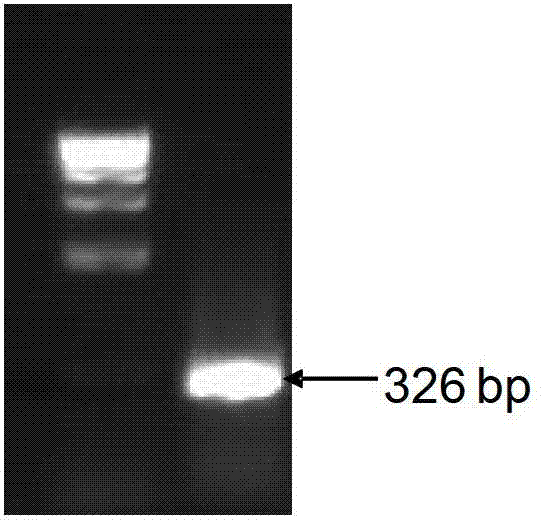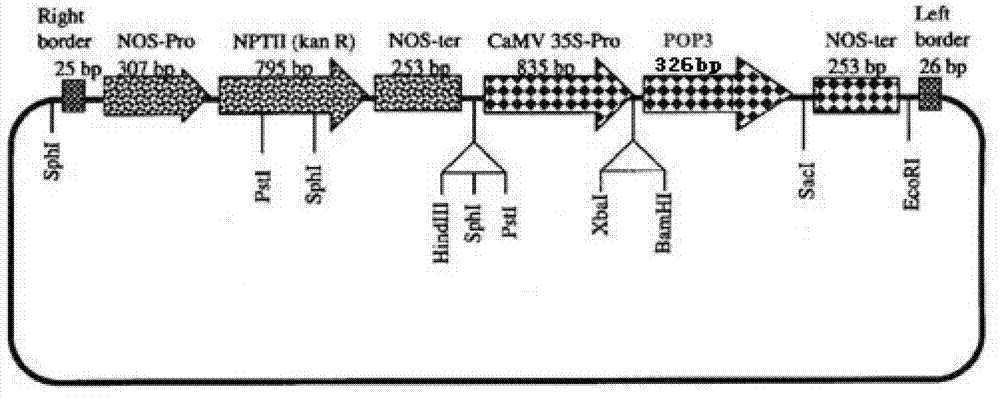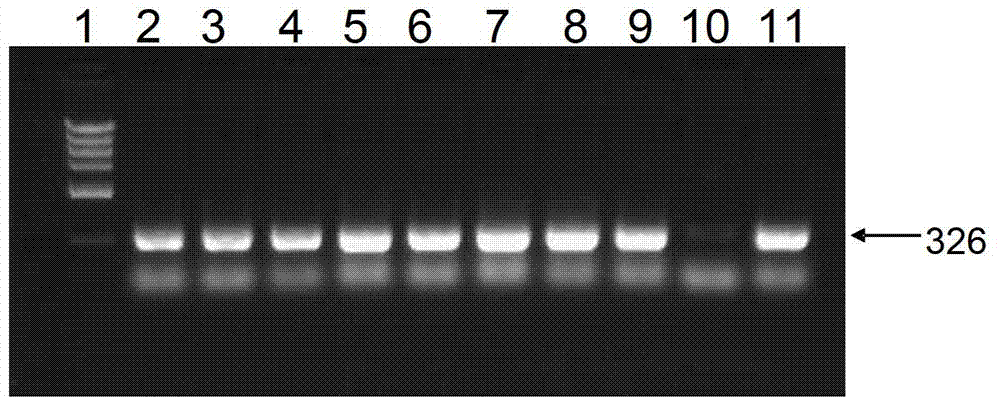Method for improving insect resistance capability of hybrid poplar
A technology of ability and poplar, which is applied in the field of improving the insect resistance of hybrid poplar, can solve the problems of wound-induced proteins with unknown functions, and achieve the effects of improving insect resistance, delaying pest resistance, and reducing the use of pesticides
- Summary
- Abstract
- Description
- Claims
- Application Information
AI Technical Summary
Problems solved by technology
Method used
Image
Examples
Embodiment 1
[0022] Embodiment 1: the acquisition of turning POP3 poplar
[0023] 1. Cloning of P. Trichocarpa wound response protein gene cDNA
[0024] According to the European aspen wound response protein cDNA sequence (AJ276517) registered in Genbank, a Blastn search was carried out in the draft genome of Populus trichocarpa (P. Trichocarpa), and the obtained sequence showed that it was a predicted protein with unknown function , its amino acid sequence is (XP 002314976), and its gene sequence is (XM 002314940).
[0025] Using the mRNA of Populus trichocarpa (P. Trichocarpa) leaves as a template, Forward:5'-atggcaaccagaactccaaa-3'; (SEQ ID No.2) and Reverse:5'-tagtagagaaagtagtctatcacaagacgc-3'; (SEQ ID No.3 ) as upstream and downstream primers, and a specific band of expected size (nucleotide sequence represented by SEQ ID No.1) was obtained by RT-PCR. The results are as follows figure 1 shown.
[0026] The PCR product (nucleotide sequence represented by SEQ ID No.1) was recovered f...
Embodiment 2
[0042] Embodiment 2: Research on the insect resistance of the POP3 poplar saplings
[0043] 1. Group rearing of American white moth
[0044] Hatch the eggs of white moth in room at room temperature, put the newly hatched 1st instar larvae of white moth in clean and dry jars, and feed the larvae with leaves of transgenic POP3 poplar saplings and non-transgenic poplar saplings respectively. Air-permeable gauze tightly binds the mouth of the bottle to ensure that the leaves are fresh and sufficient. 30 per bottle, 6 replicates. Place the culture bottle in a biochemical incubator at (25±2)°C and relative humidity (RH) 70%-80%. When feeding for 3 weeks, count the body weight and body length of each processing white moth larvae; count the survival situation before pupation, and calculate the mortality rate; record the leaf weight and remaining leaf weight for each feeding, and calculate the food intake compared with the control; After pupation, the pupation rate and average pupal...
PUM
| Property | Measurement | Unit |
|---|---|---|
| Cytokinin | aaaaa | aaaaa |
Abstract
Description
Claims
Application Information
 Login to View More
Login to View More - R&D
- Intellectual Property
- Life Sciences
- Materials
- Tech Scout
- Unparalleled Data Quality
- Higher Quality Content
- 60% Fewer Hallucinations
Browse by: Latest US Patents, China's latest patents, Technical Efficacy Thesaurus, Application Domain, Technology Topic, Popular Technical Reports.
© 2025 PatSnap. All rights reserved.Legal|Privacy policy|Modern Slavery Act Transparency Statement|Sitemap|About US| Contact US: help@patsnap.com



